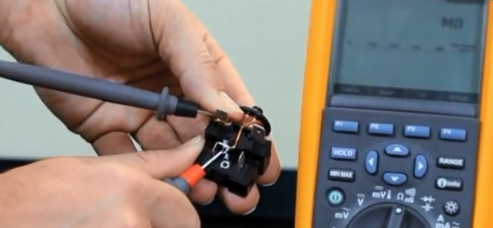 118
118Understanding the functionality of your refrigerator's start relay is crucial for diagnosing and resolving potential malfunctions.
In this article, we explore the process of testing the refrigerator start relay, shedding light on key indicators and methods to determine its effectiveness.
Whether you're troubleshooting an existing issue or seeking proactive maintenance tips, the insights provided here can help you ensure the optimal performance of your appliance.

Image Source: Embraco
A refrigerator start relay is an electrical component responsible for initiating the compressor's operation in a refrigerator.
Essentially, it acts as a switch that sends electrical signals to the compressor motor, kick-starting the cooling process.
When the refrigerator's thermostat signals that cooling is needed, the start relay activates, allowing electricity to flow to the compressor.
This, in turn, starts the refrigeration cycle, which is vital for maintaining the desired temperature inside the refrigerator.
Overall, the start relay plays a crucial role in ensuring the proper functioning of a refrigerator's cooling system.
Here's how it works:
Starting Signal: When the thermostat in the refrigerator detects that the temperature inside has risen above the set level, it sends a signal to the start relay to initiate cooling.
Switching Mechanism: The start relay contains a coil and a set of contacts.
When it receives the signal from the thermostat, the coil becomes energized, creating a magnetic field that pulls the contacts together, completing the electrical circuit.
Power to Compressor: With the contacts closed, electricity flows from the power source through the relay and to the compressor motor.
This energizes the motor, causing it to start running.
Cooling Cycle Initiation: Once the compressor starts running, it circulates refrigerant through the system, absorbing heat from inside the refrigerator and releasing it outside.
This process continues until the temperature inside the refrigerator reaches the desired level, at which point the thermostat signals the start relay to deactivate.
Deactivation: When the thermostat signals that the desired temperature has been reached, the start relay de-energizes.
This opens the contacts, interrupting the flow of electricity to the compressor motor and stopping its operation until the next cooling cycle is needed.
Here's a concise step-by-step guide to testing a refrigerator start relay:
Safety First:
Unplug the refrigerator from the power source.
Wear insulated gloves for safety.
Locate the Start Relay:
Typically found near the compressor at the back of the refrigerator.
Remove and Inspect:
Disconnect the start relay.
Inspect for damage like burns or loose connections.
Test Continuity:
Use a multimeter to check for continuity between terminals.
There should be low resistance between common, run, and start terminals.
Check Voltage:
Set the multimeter to voltage mode.
Reconnect the relay and plug in the refrigerator.
Check for voltage across terminals when the compressor should start.
Compare Readings:
Ensure readings align with specifications in the manual.
Any deviations may indicate a faulty relay.
Replace or Repair:
If the relay fails tests or shows damage, replace it.
Consider repairing if you have electronics expertise.
Reassemble and Test:
Put everything back together.
Plug in the refrigerator and ensure the compressor operates correctly.
Signs of a bad refrigerator start relay include:
Clicking Sound: You might hear a clicking sound coming from the refrigerator as the relay attempts to start the compressor but fails.
Refrigerator Not Cooling: If the compressor fails to start due to a faulty relay, the refrigerator won't cool properly or at all.
Compressor Doesn't Start: The compressor may fail to start despite the refrigerator being powered on.
Intermittent Cooling: The refrigerator may experience intermittent cooling, where it cools for a while then stops, indicating an issue with the compressor cycling.
Overheating Components: In some cases, the start relay may become excessively hot, indicating an underlying problem.
Visible Damage: Inspect the start relay for signs of physical damage such as burnt marks, melted plastic, or loose connections.
Burning Smell: If the relay is severely damaged, it may emit a burning smell due to overheating or electrical arcing.
In this guide, you've learned how to effectively test your refrigerator's start relay. By following the outlined steps, you can diagnose potential issues with your refrigerator's compressor and ensure optimal performance.
From safety precautions to testing continuity and voltage, each step is designed to help you identify a faulty start relay efficiently.
By being proactive in testing and replacing a bad start relay, you can avoid costly repairs and ensure your refrigerator operates reliably.
Take charge of your appliance's maintenance today by following this comprehensive guide to testing your refrigerator start relay.

Disclaimer: The views and opinions expressed by individual authors or forum participants on this website do not represent the views and opinions of Chipsmall, nor do they represent Chipsmall's official policy.

share this blog to:

Feedback
We appreciate your engagement with Chipsmall's products and services. Your opinion matters to us! Kindly take a moment to complete the form below. Your valuable feedback ensures that we consistently deliver the exceptional service you deserve. Thank you for being part of our journey towards excellence.